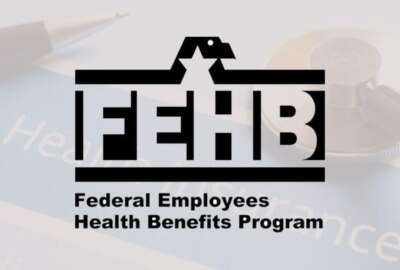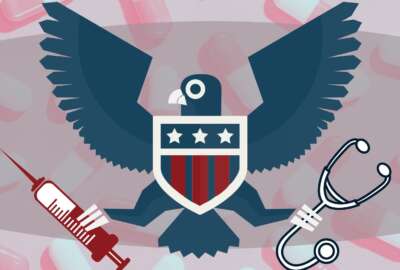2025 Open Season Exchange: OPM’s Rob Shriver on what’s new for the coming plan year
In a recent federal benefits survey, OPM found that 81% of respondents identified out-of-pocket costs as a top factor when selecting a health plan.
Many considerations can come into play as federal employees and annuitants review their health care enrollments during Open Season. But for a vast majority of feds, spending on deductibles, premiums and co-pays is a key concern.
In the Office of Personnel Management’s recent Federal Employee Benefits Survey (FEBS), 81% of respondents said out-of-pocket costs are a top factor for them when selecting a health plan. At the same time, only 5% of enrollees in the Federal Employees Health Benefits Program typically make changes to their plan options during Open Season.
For OPM Acting Director Rob Shriver, those survey findings are essential to how OPM coordinates the FEHB Program, as well as the new Postal Service Health Benefits program.
“We rely on the surveys that we do that identify the types of benefits and other priorities that our federal family is looking for in our benefits program,” Shriver said during Federal News Network’s 2025 Open Season Exchange. “We take all of that information, and we negotiate with the carriers on an annual basis to try to get the most comprehensive benefits at the best price point for federal employees.”
This year, enrollees’ share of the cost of FEHB and PSHB premiums is rising sharply. On average, FEHB participants will see premiums rise by 13.5%, while PSHB participants’ premiums are going up by 11.1%. It’s the highest annual premium increase for participants in well over a decade.
OPM said the rising costs of drugs and other market-based factors influence the rising premium rates for the two programs each year. But Shriver said it’s also important to note that the percentages are averages. There are plan options available where the enrollees’ share will stay the same, and some where the premium is decreasing. Regardless, it’s all the more reason to take advantage of Open Season and shop around for what else is out there.
“If you’re somebody who is concerned about an increase in the premium in the plan you’re currently enrolled in, you are exactly the kind of person who should be taking a look at the other options that are available to you this Open Season,” Shriver said.
Benefit changes coming to FEHB for plan year 2025
There are a number of changes FEHB and PSHB enrollees will see in the benefits available to them for plan year 2025. One notable difference, Shriver said, is the further expansion of in vitro fertilization coverage.
Specifically, two nationwide plans — GEHA and Blue Cross Blue Shield — will offer what OPM described as “comprehensive” coverage of IVF next year. Each carrier has a plan option with an additional $25,000 benefit to help cover the cost of IVF for enrollees.
In total, 25 plans are offering 45 plan options with IVF coverage above OPM’s base requirement for carriers. Shriver said the expansion of fertility coverage in FEHB has been a multiyear effort.
“We initially had required all FEHB — and now Postal — plans to cover all forms of artificial insemination and the drug costs associated with IVF procedures for up to three cycles annually,” Shriver said. “That’s the base benefit that’s available for fertility, but we’ve been working to expand comprehensive IVF benefits.”
Additionally, for 2025, OPM is focusing on further integration of Medicare prescription drug benefits in the FEHB Program.
“We’ve accepted proposals from FEHB carriers that feature automatic group enrollment for Medicare employer group waiver plans,” Shriver said. “What these do is they enable FEHB and Medicare dual enrollees the ability to benefit from the prescription drug savings that result from the Inflation Reduction Act. Eligible FEHB members who are auto-enrolled may also choose to opt out and receive the FEHB plan prescription drug benefit, if that’s what they want to do.”
FEHB carriers are also required to cover some anti-obesity medications for participants. Per OPM’s requirements, carriers have to cover at least one GLP-1 drug prescribed for weight loss, plus at least two oral anti-obesity drug options.
“We’ve also emphasized that carriers must offer comprehensive behavioral therapies that cover appropriate diet and exercise regimes for those folks who are prescribed anti-obesity medications,” Shriver said.
On top of that, OPM has emphasized maternal health benefits through FEHB as well. For 2025, 64 FEHB plans are covering mental health treatment for postpartum depression, 51 are covering certified nurse midwives, 43 are covering delivery at birthing centers, 46 are covering nurse home visits and 30 are covering doulas.
“If carriers offer the kind of benefits that you’re looking for and the kind of networks that you need for your providers, you can save money by shopping around,” Shriver said.
OPM plan tools and resources for Open Season enrollees
In its recent benefits survey, OPM also found that when selecting or switching health plans, about one-third of enrollees felt like they didn’t have enough information to make a fully informed decision.
Shriver is aiming to close that disconnect. OPM offers a host of resources to FEHB and Postal enrollees to help them understand the options that are available to them. For example, participants can use the FEHB plan comparison tool to view side-by-side comparisons of various plan options. The new Postal program has its own, more modern plan comparison tool as well, which OPM hopes to bring over to FEHB in the near future.
For those who want to look more in depth at their options, all FEHB and PSHB also publish plan brochures providing much more detail.
“That’s not just a little document,” Shriver said. “They have all of the information on health plans, dental plans, vision plans — they describe the benefits and the rates in great detail.”
And as a fail-safe, Shriver recommended enrollees call their health plan providers with any questions they might have about the benefits being offered.
“They may change carriers, they may pick a different plan with the same carrier, or they may keep their current coverage,” Shriver said. “But we’re always encouraging people to take a look at the new options available to them and shop for coverage.”
The future of FEHB, PSHB
Shriver said he’s “confident” the PSHB Program will have a successful launch year. And in some ways, he views the PSHB launch as a pilot for considering updates to the federal benefits program overall in the future.
For PSHB’s inaugural year, OPM is aiming to make the transition into the new program as easy as possible for Postal enrollees by using an auto-enrollment feature.
“If a Postal employee or an annuitant doesn’t do anything during Open Season, they are going to be automatically enrolled in a health plan that’s comparable to the one that they had under the FEHB Program,” Shriver said. “Our priority is to ensure that every person is covered. We don’t want there to be any breaks in coverage.”
But of course, just like FEHB enrollees, incoming PSHB enrollees who do want to make changes to their options are able to do so during this year’s Open Season for plan year 2025. PSHB participants have a new online portal that lets them view plan options and change their health care selections for the upcoming year.
“We’ll have information on enrollee eligibility, a plan comparison tool, a table that shows how we’ve mapped the FEHB plans to the Postal Service plans, specific descriptions of any plan and information on the newly developed PSHB system,” Shriver said.
The new central enrollment platform that’s available to Postal enrollees is something Shriver hopes OPM will be able to expand to the larger FEHB population in the future.
“The FEHB Program has been built as a decentralized program, where a lot of the activity happens between the employee and the carrier, or the employee and the agency,” Shriver said. “That’s opposed to the approach with the Postal system, where we have a central enrollment platform that will just give us better data, better analytics, a better opportunity to advance program integrity.”
Discover more articles and videos now on Federal News Network’s 2025 Open Season Exchange event page.
Copyright © 2025 Federal News Network. All rights reserved. This website is not intended for users located within the European Economic Area.
Drew Friedman is a workforce, pay and benefits reporter for Federal News Network.
Follow @dfriedmanWFED






